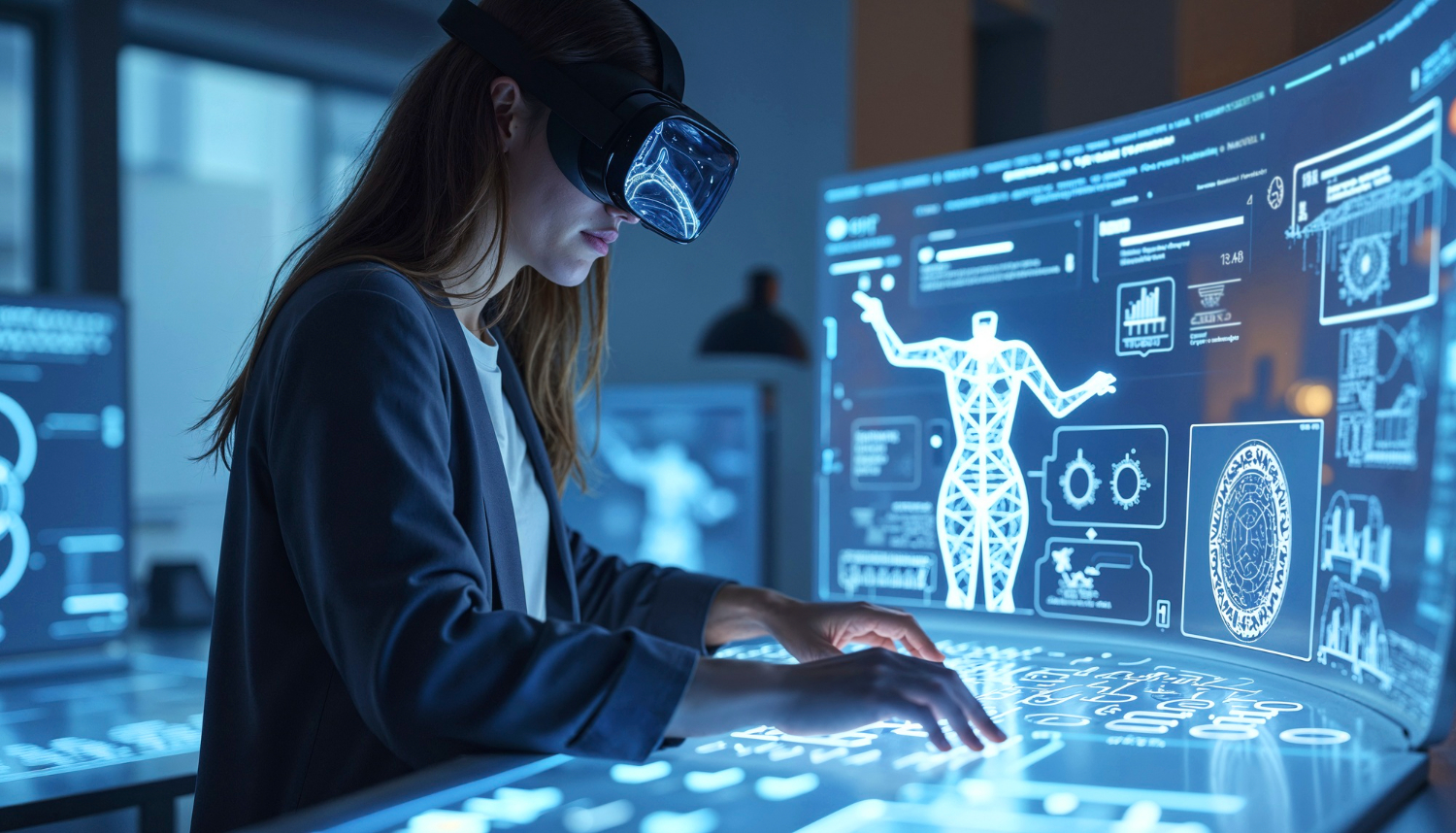Introduction
Supply chain management is a technology that tracks and coordinates the flow of goods from origin to destination. So in today’s world, it has become an important engine.
Recently, AI has become an important agent of change in several fields. In supply chain management and logistics, AI detects malfunctions, analyses the market, package, and manages inventory. Let’s delve into specific real-world applications and use cases that illustrate how AI is not just a concept but a powerful operational tool, redefining the dynamics of supply chain efficiency.
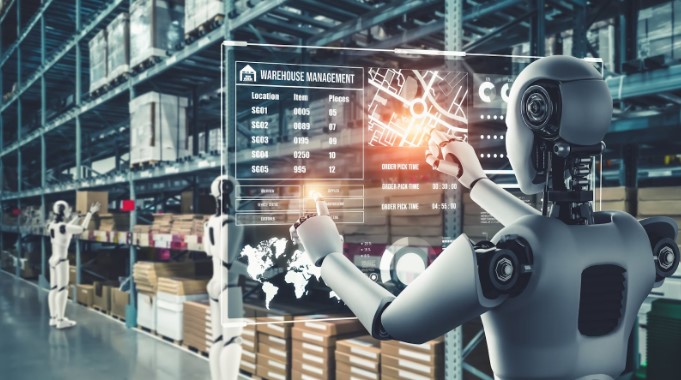
Use cases
AI is used in supply chain management to reduce risk and help companies avoid errors, delays, and waste. With AI, we can preemptively predict maintenance and thus prevent the expensive repairs that cause disruptions. We also increase overall efficiency in this way.
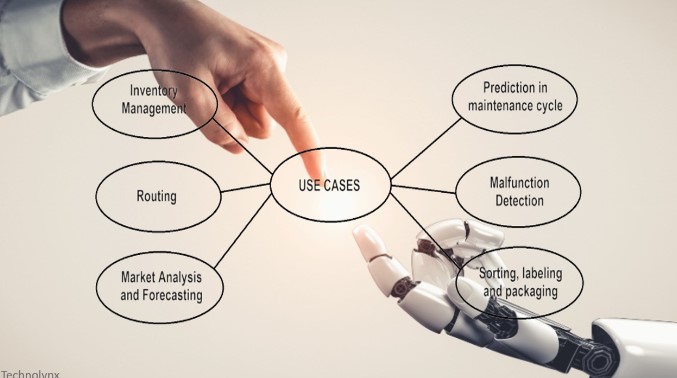
1. Prediction in the maintenance cycle
One must ensure that everything is operating properly without any issues in supply chain management. Examples of equipment include manufacturing equipment such as conveyor belts and forklifts; and avionics equipment such as aircraft engines, flight controls, or power generation plants. Through analysing previous data, patterns AI assists companies in predicting failures of their equipment. Internet of Things (IoT) devices can be integrated into machinery to gather information about them.
2. Malfunction detection
In supply chain management, anomalies or aberrations in machinery can create problems and must be removed from the system. Computer Vision (CV) and Machine Learning (ML) make it possible to eliminate some potential malfunctions. CV can monitor the system. This helps us track variations from normal machine operation state. This aids in discovering any aberration or malfunctioning.
3. Sorting, labelling and packaging
Other areas, such as sorting, labelling, and packaging, can also be integrated with AI technologies. From the customer’s perspective, product quality is hoped to be high. But from a company’s point of view, efficiency in delivering products or services to the customers must also be ensured. This can be achieved with the ML technology of AI. For example, ML development services are used in agriculture to optimise agricultural processes. When resources are needed, they must be on hand. This is achieved through efficient supply chain inventory management. In the food industry, algorithms like Artificial Intelligence Generated Formulas (AIGFs) are used instead of human formulas to give consumers a more personal experience. Generative AI is applied in the food industry to generate personalised formulas, offering consumers a unique experience. Additionally, AI-driven food recommendation systems analyse user preferences. In addition, food recommendation systems using AI analyse the user’s preferences and recommend foods. AI is also used to monitor supply in food security by apps like Swiggy and Zomato.
4. Inventory management
With the integration of ML development services, inventory management becomes easy. AI controls industrial processes. Using CV technology, the precision required for quality control means more efficient inventory and supply chain operations. The entire concept deals with optimising supply chain inventory and is also a radical departure from how modern businesses run their logistics.
5. Synthetic Data Generation
Introducing Generative AI for the creation of synthetic data. This application is instrumental in testing and simulating real-world scenarios within the supply chain, enhancing adaptability and resilience.
6. Routing
Routing is an important step in supply chain logistics, and combining edge computing changes the process. Leveraging the power of edge computing, further assistance to route optimisation is provided through real-time decision-making. It reduces latency and improves overall delivery efficiency. As a result, goods reach their destination as quickly and smoothly as possible.
7. Market analysis and forecasting
The arrival of Graphics Processing Unit (GPU) acceleration marks the beginning of a new market research and forecasting era. This advanced technology helps data processing to be stronger, allowing for faster analysis. Thanks to the potential of big data, GPU speed is improving both accuracy and execution time for forecasting. Faster decisions are made with data in ever-changing market conditions that demand minimised response times to keep competitive. Moving from these transformative applications, we now delve into the tangible benefits of AI in the supply chain and logistics sectors.
Benefits
1. Minimising cost and time and increasing revenue
AI in the supply chain and logistics sectors is becoming increasingly fruitful. Procurement costs have been reduced by 20-50%, and system costs by more than 15% (McKinsey, 2020). AI-powered logistics processes reduce order processing time by 2% (DHL, 2022). There is potential for a 10-20% increase in revenue through better demand forecasts (PwC, 2020). Using AI to optimise routes has driven UPS to 185 million annual mileage miles, reducing carbon emissions and fuel costs. AI-powered robots in the warehouse replace 20% of operational costs (Amazon, 2022). These are just a few hard data points highlighting how AI can improve efficiency, reduce costs, and increase supply chain revenue.
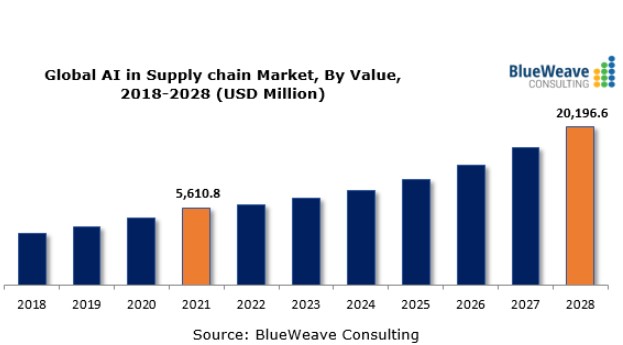
The Global AI in the supply chain market reached USD 5,610.8 Million in 2021, and it’s expected to surge to USD 20,196.6 Million by 2028, with a projected CAGR of 20.5% during 2022-2028. This growth is fueled by the increasing focus on AI, expanding applications of computer vision, and the demand for AI-driven automation solutions in the evolving supply chain landscape
2. Better customer service
The introduction of AI into supply chain and logistics greatly upgrades customer service. By 2022, over $8 billion in annual cost savings will be achieved through AI-powered chatbots (Juniper Research, 2022). AI in customer service will bring about a 10% improvement in customer satisfaction by 2023 (Gatner, 2022). AI-powered chatbots have reduced their response times by 80% (Salesforce, 2023). Personalised customer relations using AI can increase revenues by 6-10% (McKinsey, 2023). Proactive issue resolution can reduce customer complaints by as much as 90% (IBM, 2022).
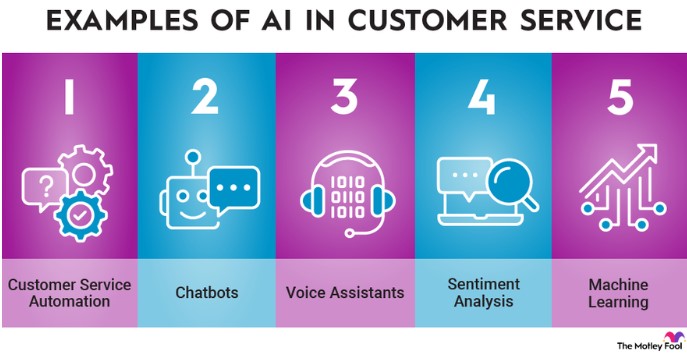
3. Risk management
AI in supply chain and logistics reinforces risk management against weather-related, market-based uncertainties. Weather forecasts based on AI are 25% more accurate than traditional weather predictions (NCAR, 2021). The applications of AI are said to reduce forecasting errors for market and economic risks by 20-30% (Deloitte). AI-based risk management reduces supply chain disruptions by 50% (Accenture, 2022). With real-time market monitoring guided by AI, proactive response capabilities are improved by 30% (Capgemini). AI technologies can improve supply chain resilience by 15-30% (World Economic Forum, 2023). Although the exact numbers change, these wisdoms highlight how AI is helping supply chains defend against different risks.
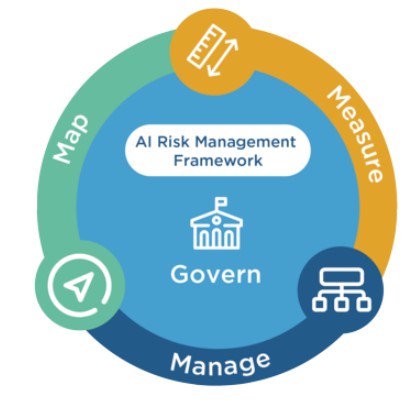
While businesses understand the long-term benefits of efficiency and competitive strength, there remains a financial wild card risk with the possibility of unsuccessful implementation. This careful cost-benefit analysis is an integral feature of the dynamic integration process, opening up opportunities to investigate issues underlying the need for AI deployment in supply chain management.
Challenges of using AI
1. Cost of implementing
The high adoption cost is one major obstacle to implementing AI in supply chain and logistics. Integration and data readiness are also substantial upfront. The operating costs include maintenance fees, talent acquisition, and regulatory compliance. Costs arise in recruiting skilled professionals and training existing staff. The risk of unsuccessful implementation adds a financial wildcard to the project mix. However, businesses understand that there are long-term gains in efficiency and competitiveness to be had. This dynamic integration process means carefully accounting the costs against likely benefits.
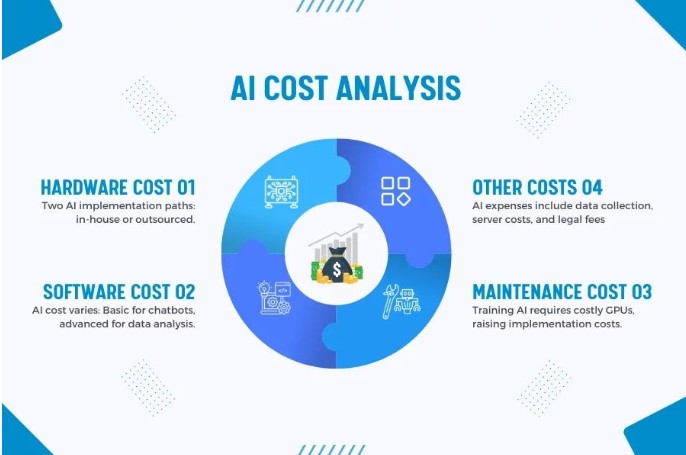
2. Lack of resources
One major resource constraint for applying AI in supply chain and logistics is a lack of personnel with professional knowledge of robotics, ML & computing. Problems lacking in data quality and quantity, financial constraints, and outdated infrastructure also hinder adoption. Training personnel both in technical skills and AI literacy costs extra resources. The process of development and integration has time constraints, however. Establishing robust cybersecurity measures requires special resources. Overcoming these limitations necessitates targeted investment in improving the workforce, data management, infrastructure, and cybersecurity to take full advantage of all that AI offers for supply chain management.
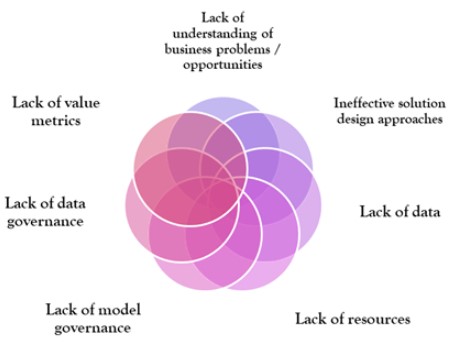
3. Privacy issues
First, using AI in supply chain and logistics brings privacy risks. These challenges include issues over data security, regulatory compliance, or ethics. This raises complexities and potential legal consequences, as stringent data protection regulations such as the General Data Protection Regulation (GDPR) require managing sensitive information. Balancing AI-driven efficiency and privacy, settling questions of who owns the data, promoting algorithmic transparency, and reversing biases will require map reading. In this changing environment for supply-chain AI, companies must take strong steps to ensure cybersecurity and uphold privacy regulations; they should communicate honestly with the public about data collection practices. They also need to periodically monitor developing models to not unwittingly discern certain attributes from which biases can arise or be mistakenly turned into stereotypes.

What can we offer you as a software company?
At TechnoLynx, we realise that the special needs of using AI in Supply Chain Management and Logistics do not fit easily into a one-size-fits-all model. Bringing innovations customers can get used to means giving each customer a different option that meets their needs. But we know that the combination of AI will be difficult in all these rapidly changing fields whose constituents are merging. We specialise in refining and expanding AI; making safe contact between man and machine; collecting and storing big data on a large scale; and examining it from many perspectives to yield results for analysis. We want to continue paying attention to ethics and provide accurate software solutions for various companies.
By prioritising innovation, we remain at the cutting edge of creating AI applications for Supply Chain Management and Logistics. In this rapidly moving field, we offer cutting-edge solutions that enhance efficiency and accuracy while increasing productivity. As AI disrupts how businesses handle their logistics and supply chain operations, TechnoLynx may be the plug-and-play cure for these headaches.
Conclusion
AI in Supply Chain Management and Logistics is not only the wave of tomorrow but a reality today. Inventory management and route planning are two areas where AI is being integrated, unleashing waves in the industry. But with such developments come challenges. Fortunately for businesses, TechnoLynx is poised to accompany them on this transformative journey. If your organisation wants to benefit from the disruptive power of AI in Supply Chain Management and Logistics, TechnoLynx can provide you with specialised yet effective solutions. With TechnoLynx, the tomorrow of challenges meets the day of innovation. Join us in exploring possibilities!
Works Cited
-
A neural network improves forecasts for severe storm hazards NCAR & UCAR News (no date) (Accessed: 13 February 2024). -
Burns, M. (2023) Using AI to Build Stronger Connections with Customers (Accessed: 13 February 2024).
-
Das, A.C. et al. (2023) The next frontier of customer engagement: AI-enabled customer service (Accessed: 13 February 2024).
-
Gartner reveals three technologies that will transform customer service (2023)(Accessed: 13 February 2024).
-
Harrigan, P., Jr (2023b) ‘How Amazon Uses AI to Dominate Ecommerce: Top 5 Use Cases,’ l, 9 January (Accessed: 13 February 2024).
-
Optimising Supply Chain Visibility & Efficiency with AI (no date) (Accessed: 13 February 2024).
-
PricewaterhouseCoopers (no date) Reimagining tomorrow’s supply chains (Accessed: 13 February 2024).
-
Research, J. (2017) Chatbots, a Game Changer for Banking & Healthcare, Saving $8 billion Annually by 2022, Juniper Research Ltd, 9 May (Accessed: 13 February 2024).
-
Salesforce (2023) Nearly 80% of High-Performing Field Service Organizations Use AI — Here’s What Else They’re Doing Right (Accessed: 13 February 2024).
- 3 ways technology can help to strengthen supply chains (2023) (Accessed: 13 February 2024).
Sources for the images
-
Troy Prothero (2022). Symphony RetailAI CPG.
-
Ashwini (2023). Startuptalky.
-
Bowman, J. (2023). Fool.
-
NIST (2023). Risk Management Framework.
-
Gsquare Web Technologies Pvt.Ltd (2023). Medium.
-
Jadhav, K. (2023). Medium.
-
Graciano, P. (2023). PrivateAi.











